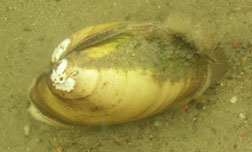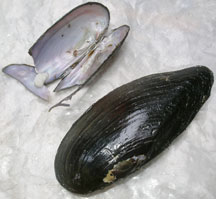
Our Mission: The Mattabeseck Audubon Society, a chapter of the National Audubon
Society, is committed to environmental leadership and education for
the benefit of the community and the earth's biodiversity.
deKoven House,
27 Washington Street,
Middletown, Connecticut 06457
House Finch vs. Purple Finch: Key ID Tips

Color is helpful in telling finches apart, but it varies among individuals. Females and young males of both species are simply brown and white, and can be especially tricky. Female Purple finches have a well-defined white mark above each eye and are more crisply patterned. As always, structure and behavior are also useful.

from audubon.org website
Hairy or Downy Woodpecker?

Although it’s easy to find these woodpeckers out in the woods, distinguishing between these two common species can be an identification challenge for new birders. Although they’re very similar, here are some key differences to look for.
Bill size is a major difference. The Downy’s bill is dainty, and about one-third the length of the bird’s head. The Hairy’s bill is a railroad spike in comparison, and almost as long as its head.
If the bill is not in view, the next best clue: Overall size. The Downy is a little over six inches tall, while the Hairy is almost 50 percent taller (just under nine inches). Seeing a three-inch difference across a meadow or a yard can be difficult. So consider Relative Size: Downy is about House Sparrow size, while the Hairy is about Robin size. As your woodpecker moves around, you’ll be able to judge its size in relation to other objects (leaves, branches, etc.). Over time the size will become more familiar to you, and you won’t need to lean on the surrounding visuals.
More subtle clues: Hairy’s all-white outer Tail Feathers, compared to Downy’s spotted ones. Also, the male Hairy’s Red Patch is often split in two, while the Downy’s is not. Lastly, it’s important to note that the Downy Woodpecker is much more abundant than its Hairy counterpart, especially in suburbia. The Hairy prefers towering trees and deeper woods, while the Downy will settle for baby birches and cattails.
from audubonmagazine.org
Black Vulture or Turkey Vulture?
Black Vulture (left); Turkey Vulture (right)

In flight, watch for a wobbling, or tilting motion unique to turkey vultures. Black vultures are too heavy to wobble; they just glide on wings held flat.
Black vultures lack the strong V-shape dihedral wing outline of turkey vultures, and they punctuate soaring glides with strong wing flaps. Their motion is hurried, as if they have to work at staying aloft. In contrast, turkey vultures have slower, deeper wing beats, and they flap less frequently.
From below, its easy to distinguish the short, blunt tails of black vultures from the rudderlike tails of turkey vultures. Black vultures’ underwings sport a silvery white patch at the ends, whereas turkey vultures display a broad, gray, trailing edge along the length of each wing. Sitting, a black vulture’s gray head and longer bill are quite different from its cousin’s blunter bill and hamburger-red head. And getting close is sometimes no problem at all.
from T. Edward Nickens, audubonmagazine.org

Yellow Lampmussel
In Summer 2006 we were honored to be the first people in 80 years to find the Yellow Lampmussel in Connecticut. The specimen was photographed and carefully returned to its habitat, and the photos were sent to the DEP for confirmation. The mussel was a gravid female, just about to set seed.
The mussel (not the same individual) was found again by the DEP mussel survey team (3 specimens in this same area). And the species was found by us again twice in summer of 2007, in that same area. The find was important because it restored this species to the Endangered Species list (extirpated species are removed from that list).
In 2014, 24 living individuals were counted and photographed in one afternoon in the same area.
In 2017, a the shell of a recently-deceased Yellow Lampmussel was found in Cromwell.

Tidewater Mucket
The Tidewater Mucket is a species of special concern in Connecticut. It is prevalent in the Connecticut River though. The nacre inside the shells an be quite vibrant pinks, from salmon pinks to purple-pink. The shells are inflated (fat) and reasonably easy to identify. Young live individuals can be mistaken for Yellow Lampmussels at first glance. The Muckets, however, are considerably deeper in color.

Eastern Pond Mussel
These mussels are very distinctive in shape with a long pointed posterior end. The nacre can be irridescent lavendar in freshly killed shells. This species is also on the Special Concern list. It is usually not present in large numbers, however in certain localities it can be quite prevalent.